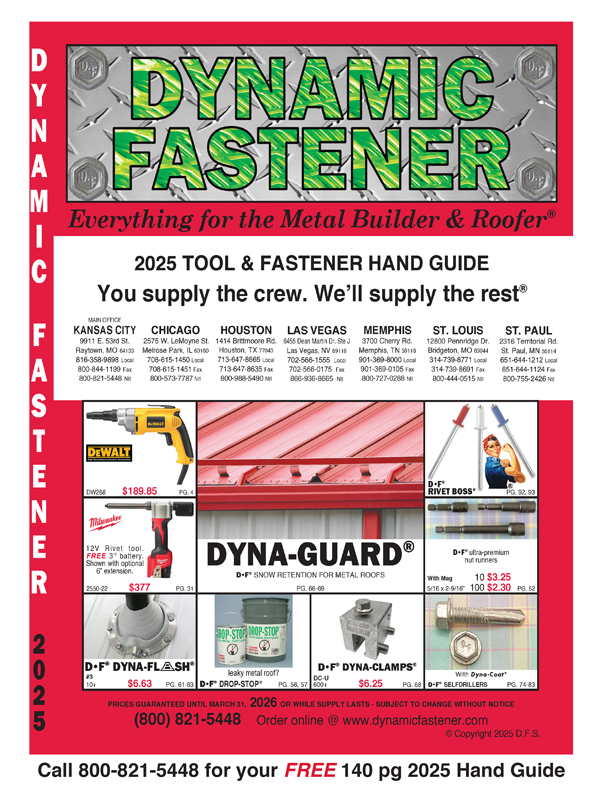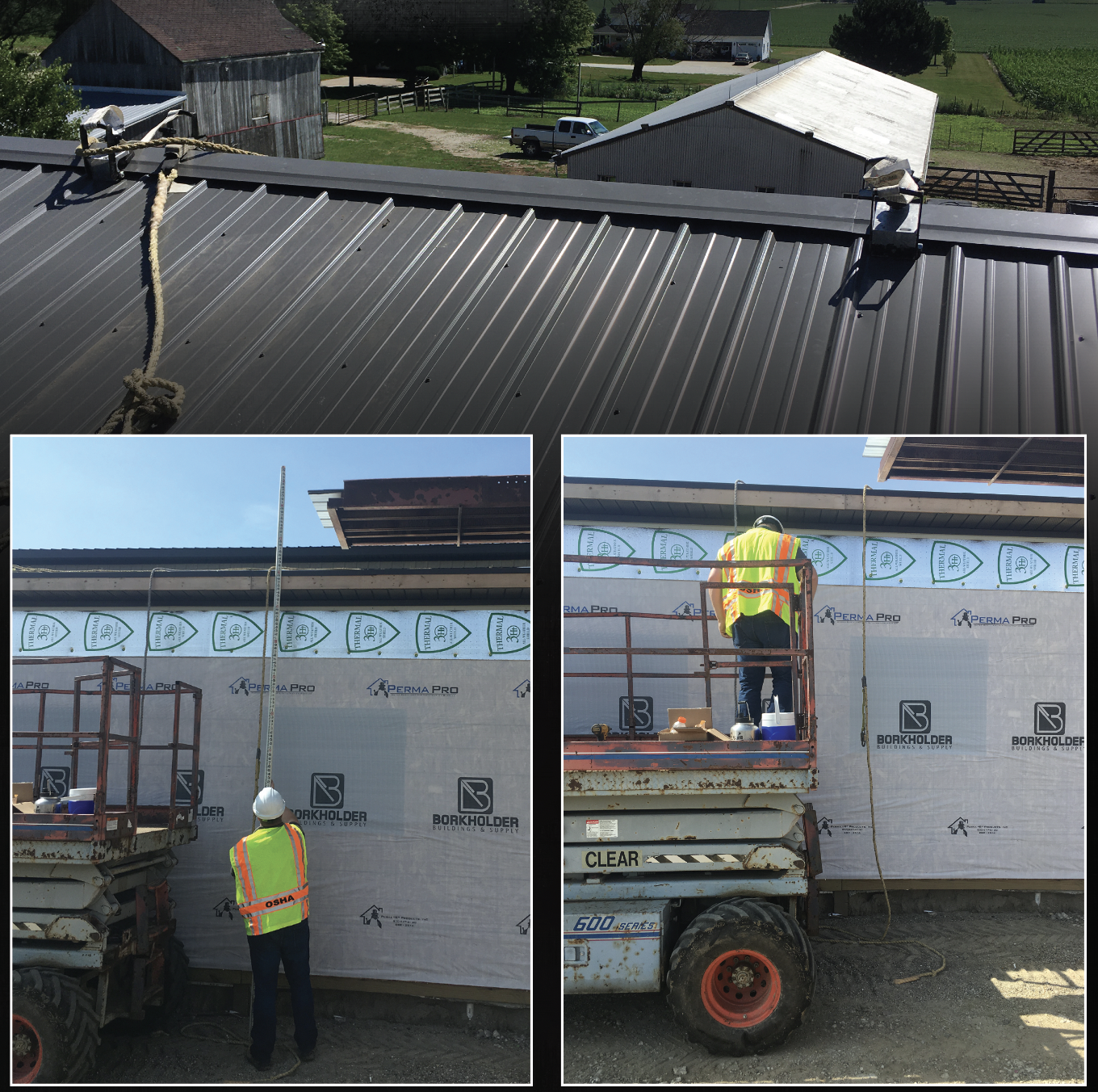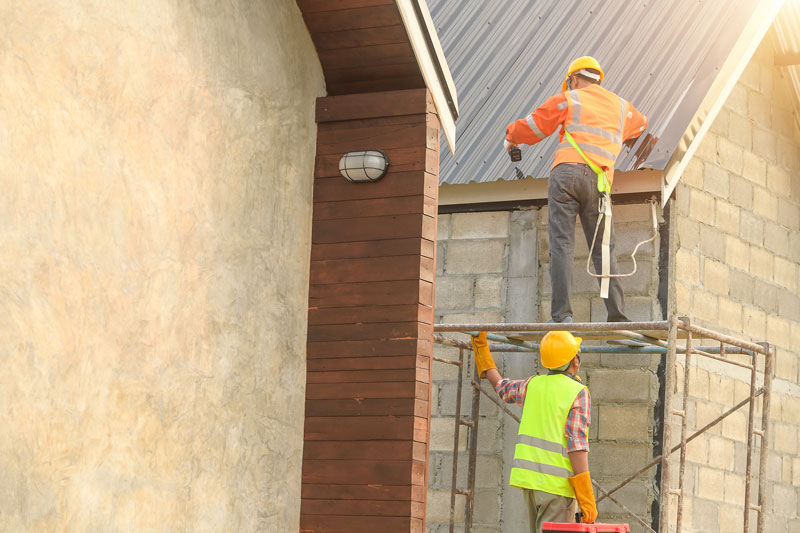By Karen Knapstein
The Occupational Safety and Health Act of 1970 was enacted to help ensure employers act responsibly and provide “safe and healthful workplaces for their employees.”
It’s no secret that the construction trade is hazardous. After all, building and roof construction involves heavy tools, awkwardly shaped supplies that need to be man-handled, and powerful equipment necessary to get the job done. For those who have chosen to build for a living, serious injuries can occur in an instant.
As an employer, you recognize skilled labor is one of your most valuable assets. Naturally, protecting those assets ranks high on your list of priorities.
When the nature of your business is inherently hazardous and you have “Big Brother” [OSHA] looking over your shoulder to make sure you are compliant with the state or federal safety standards, it’s no wonder employers might feel suspicious or perhaps targeted by the entity that is charged with ensuring the safest possible work conditions for America’s working men and women.
Just how hazardous is construction? The Bureau of Labor Statistics (BLS) reported that out of 4,674 worker fatalities in private industry in calendar year 2017, 971 (20.7 percent) were in construction. This equates to one in five worker deaths in 2017 were in construction.
The ‘Fatal Four’
The leading causes of private sector construction worker deaths (excluding highway collisions) were:
Falls: 381 deaths in construction in calendar year 2017 (39.2 percent of 971 total deaths)
Struck by an object: 80 deaths (8.2 percent)
Electrocutions: 71 deaths (7.3 percent)
Caught-in/between: 50 (5.1 percent). This category includes construction workers killed when caught-in or compressed by equipment or objects, and struck, caught, or crushed in a collapsing structure, equipment, or material.
When totaled, these “Fatal Four” causes were responsible for more than half (59.9 percent) the construction worker deaths in 2017, the BLS reports.
Help For Reducing Jobsite Hazards
With the aim of reducing the number of work-related injuries and deaths, OSHA offers a free On-Site Consultation Program. According to the U.S. Department of Labor, “OSHA’s On-Site Consultation Program is the agency’s primary program for providing small business owners no-cost consultation services to address hazards and improve workplace safety and health without fear of citations or monetary penalties. These programs are funded by OSHA and run by state grantees that are knowledgeable about the needs of the small businesses they serve.”
The On-Site Consultation Program is a tool employers can use to facilitate a program that suits their own unique needs. An OSHA spokesperson explained: “By using OSHA’s expertise to identify hazards and provide training and education so that small employers may develop their own safety and health management programs, the no-cost On-Site Consultation Program has been able to help these businesses decrease workers’ compensation costs, improve worker morale, and increase productivity.”
OSHA reported that in federal fiscal year 2018, its On-Site Consultation Program consultants conducted more than 26,000 visits to small business worksites, which covered approximately 1 million workers across the nation.
Where To Find A Consultant
The Consultation Program is available in all 50 states, the District of Columbia, and several U.S. territories. It has demonstrated significant value to small and medium-sized employers. Being a voluntary program, it is up to employers to contact a consultant in their area. (Find a nearby consultant online at http://bit.ly/OSHAconsult.)
How The Program Works
There are four basic steps in the On-Site Consultation Program. The first step is an opening conference with the OSHA consultant to review the consultant’s role in the process, as well as the obligations the employer incurs by participating in the program.
The second step is the workplace or jobsite walk-through. OSHA encourages as many employees to participate as possible, because better-informed employees can more easily work with employers to identify and correct potential workplace hazards. Talking with employees during the walk-through helps the consultant identify and judge the nature and extent of specific hazards.
The consultant will study the entire workplace or the specific operations the employer designates. Consultants will discuss the applicable OSHA standards and also will point out other safety or health risks that might not be cited under OSHA standards, but may pose risks to employees.
Hazards identified during a walk-through vary, and are dependent upon the workplace and the work operations performed at that particular site. Potential hazards could be machines that are unguarded, workers not wearing appropriate personal protective equipment, and lack of fall protection.
Hazards that are more common — and even easier to fix — are blocked or locked exit doors, blocked passageways, and improperly stored materials.
On-site consultants help employers recognize these and other hazards in their workplace and make suggestions for solving safety and health problems.
A closing conference (step three) will follow the jobsite walk-through. During the conference, the consultant will review detailed findings with the employer. Those findings will include aspects the employer can improve upon, as well as pointing out what employers are “doing right.” It is during this closing conference that problems, possible solutions, and abatement periods to remedy any serious hazards that were identified during the walk-through, are discussed.
Some situations prove more pressing than most. The Program Guide explains: “In rare instances, the consultant may find an ‘imminent danger’ situation during the walk-through. If so, you [the employer] must take immediate action to protect all employees. In certain other situations that would be judged a ‘serious violation’ under OSHA criteria, you and the consultant are required to develop and agree to a reasonable plan and schedule to eliminate or control that hazard. The consultants will offer general approaches and options to you. They may also suggest other sources for technical help.”
The fourth and final step of the On-Site Consultation Program is hazard abatement and follow-through. During this step, the consultant sends the employer a detailed written report explaining the findings and confirming any abatement periods agreed upon.
Consultants also provide aid in developing programs in which employers can train their employees in hazard recognition and avoidance. The guidance from qualified experts takes some of the pressure off employers to know it all.
The consultant may contact the employer periodically to check on progress. OSHA requires hazard abatement to ensure that each consultation visit achieves its objective: effective employee protection.
In the event that an employer fails to eliminate or control the identified serious hazards (or an imminent danger) according to the plan and within the limits agreed upon (or an agreed-upon extension), the situation would then be referred from a consultation to an OSHA enforcement office for appropriate action.
An OSHA spokesperson made the assurance: “The consultation is confidential and will not be reported to OSHA inspection staff. No citations or penalties will be issued and your only obligation is to correct serious job safety and health hazards.”
Conclusion
In a 2016 interview with Safety & Health Magazine, then-Deputy Assistant Secretary of Labor for Occupational Safety and Health Jordan Barab explained, “Any small employer can essentially get a free visit from a consultant who can point out all the health and safety issues that we [OSHA] might find in a later inspection, and give them an opportunity to correct those.”
The On-Site Consultation Program is OSHA’s equivalent to the answers at the back of the teacher’s textbook. Why not use them before the test? MR
Sources: OSHA.gov; safetyandhealthmagazine.com





















